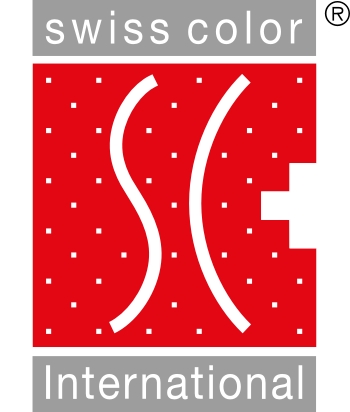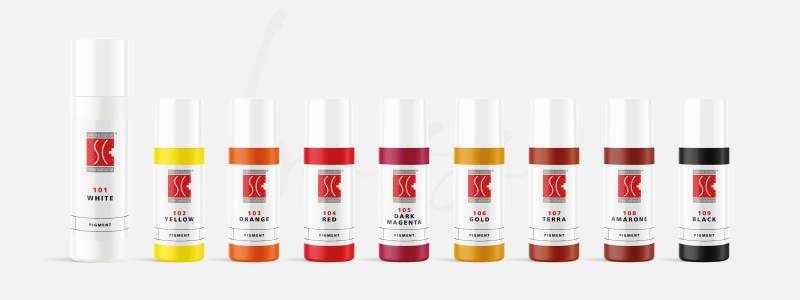Base pigments: Buy your personal PMU base color selection
Refine, customize, adapt or design your own color range completely yourself!
Swiss Color offers its own range of colors called “Base Pigments”. These Permanent make up colors, also known as PMU ink, are high-purity pigments and form the basis for mixing all Swiss Color colors. The Base color palette ranges from white, yellow, orange and red to various shades of brown and black.
It is important to note that these colors are only intended for mixing and must not be used pure! Exceptions to this are the pigments 104 Red for intense red lip pigmentation and 109 Black for sensual eyeliner Permanent make up.
With the base colors, you can refine and customize the existing Swiss Color pigments. On the other hand, it is possible to create your very own PMU ink. Several base pigments can be mixed in different quantities to create an individual color.
Please note that if you are interested in color theory or colorimetry, but also if you are unsure about mixing pigments, you should attend a special training class beforehand.
Refer to the current PMU color chart or the online pigment description in our online store to find out which Swiss Color Base pigments belong to the organic or inorganic pigment class. Organic pigments are those based on synthetically produced carbon. They are characterized above all by brilliant shades, a wide color spectrum and their hypoallergenic composition. When incorporating organic pigments, particular attention must be paid to correct technique and care in handling the pigments. Inorganic pigments, also known as mineral pigments, are based on metal oxide compounds. They have a pastel matt finish and are easy to handle. In addition, they are usually very stable, durable and lightfast.
All Swiss Color pigments are REACH-compliant and very safe in terms of quality and processing.
Which Permanent make up colors are permitted?
Only use REACH-compliant color in your Permanent make up and Microblading studio. The term “REACH” stands for “Registration, Evaluation, Authorization and Restriction of Chemicals” and was issued by the ECHA, the European Chemicals Agency. The REACH regulation can be described as the EU's chemicals legislation and covers all EU-wide regulations.
The pigment origin, whether the pigment is organic, inorganic, mineral or mixed, is not decisive for REACH conformity. Rather, it is about the respective, permitted ingredients and the composition of the color itself. Only pigments whose ingredients and composition comply with the REACH regulation can be considered safe and can be used without hesitation.
What are artificial pigments?
Artificial pigments are pigments whose ingredients are not obtained directly from natural resources such as leaves, extracts or juices. In artificial pigments, these ingredients are produced synthetically. At Swiss Color, we speak in this context of an organic, inorganic or mixed pigment origin.
Organic pigments are those that are based on synthetically produced carbon. Inorganic pigments, also known as mineral pigments, are based on metal oxide compounds. Artificial pigments, as an umbrella category, can therefore fall into both the organic and inorganic categories. All information on the respective pigments can be found easily and clearly in the current color chart as well as in the Swiss Color online store.
What are hybrid pigments?
Hybrid pigments, also known as blend pigments, are Permanent make up colors that are based on a mixture of organic and inorganic ingredients.
At Swiss Color, you can buy blend or hybrid pigments for all Permanent make up treatment areas, such as eyebrows and lip colors. You will find the respective pigments with the symbol “B” in the current color chart or in the Swiss Color product catalog. In the online store, you can select all blend pigments directly in the “Pigments” category using the “Chemical composition” filter function and add them to your shopping cart.
How do Permanent make up colors and their composition differ?
Permanent make up and Microblading pigmentation colors differ on the one hand in their ingredients’ origin. They can be organic, inorganic or mixed. The respective pigment usually consists of a combination of different primary colors. Use the Swiss Color color chart or the current product catalog to compare the respective color ratios of the individual pigment colors.
PMU pigments can be divided into cool, warm or neutral pigment shades, due to their development in the skin during the regeneration phase. PMU colors can also be catagorized by common treatment area classifications are eyebrow, lip, camouflage and eyeliner pigments. PMU colors can also be classified and used according to the customer's skin type using the well-known “Fitzpatrick skin type classification”.
The opacity of the individual PMU color can also be used as a distinguishing criterion. Swiss Color offers pigments with light, medium and strong opacity. All information on Swiss Color pigments can also be found online in the Swiss Color store or shopping cart.
What are mineral pigments?
Mineral pigments, also known as inorganic colors, are PMU colors that are based on metal oxide compounds. These colors are summarized in the color group “mineral pigments”. They are characterized above all by their pastel matt color palette and the ease with which they can be worked into the customer's skin.
Pigments in this category are generally very stable, long-lasting and lightfast. For customers who are more prone to allergies or allergy development, a test pigmentation on an inconspicuous area of the skin should always be insisted on. Color changes due to oxidation can not be completely ruled out. In this case, many factors such as treatment quality, skin metabolism, lifestyle or medication intake can play a role.
Base pigments: Buy your personal PMU base color selection Refine, customize, adapt or design your own color range completely yourself! Swiss Color offers its own range of colors...
read more » Close window Base pigments: Buy your personal PMU base color selection
Refine, customize, adapt or design your own color range completely yourself!
Swiss Color offers its own range of colors called “Base Pigments”. These Permanent make up colors, also known as PMU ink, are high-purity pigments and form the basis for mixing all Swiss Color colors. The Base color palette ranges from white, yellow, orange and red to various shades of brown and black.
It is important to note that these colors are only intended for mixing and must not be used pure! Exceptions to this are the pigments 104 Red for intense red lip pigmentation and 109 Black for sensual eyeliner Permanent make up.
With the base colors, you can refine and customize the existing Swiss Color pigments. On the other hand, it is possible to create your very own PMU ink. Several base pigments can be mixed in different quantities to create an individual color.
Please note that if you are interested in color theory or colorimetry, but also if you are unsure about mixing pigments, you should attend a special training class beforehand.
Refer to the current PMU color chart or the online pigment description in our online store to find out which Swiss Color Base pigments belong to the organic or inorganic pigment class. Organic pigments are those based on synthetically produced carbon. They are characterized above all by brilliant shades, a wide color spectrum and their hypoallergenic composition. When incorporating organic pigments, particular attention must be paid to correct technique and care in handling the pigments. Inorganic pigments, also known as mineral pigments, are based on metal oxide compounds. They have a pastel matt finish and are easy to handle. In addition, they are usually very stable, durable and lightfast.
All Swiss Color pigments are REACH-compliant and very safe in terms of quality and processing.
Which Permanent make up colors are permitted?
Only use REACH-compliant color in your Permanent make up and Microblading studio. The term “REACH” stands for “Registration, Evaluation, Authorization and Restriction of Chemicals” and was issued by the ECHA, the European Chemicals Agency. The REACH regulation can be described as the EU's chemicals legislation and covers all EU-wide regulations.
The pigment origin, whether the pigment is organic, inorganic, mineral or mixed, is not decisive for REACH conformity. Rather, it is about the respective, permitted ingredients and the composition of the color itself. Only pigments whose ingredients and composition comply with the REACH regulation can be considered safe and can be used without hesitation.
What are artificial pigments?
Artificial pigments are pigments whose ingredients are not obtained directly from natural resources such as leaves, extracts or juices. In artificial pigments, these ingredients are produced synthetically. At Swiss Color, we speak in this context of an organic, inorganic or mixed pigment origin.
Organic pigments are those that are based on synthetically produced carbon. Inorganic pigments, also known as mineral pigments, are based on metal oxide compounds. Artificial pigments, as an umbrella category, can therefore fall into both the organic and inorganic categories. All information on the respective pigments can be found easily and clearly in the current color chart as well as in the Swiss Color online store.
What are hybrid pigments?
Hybrid pigments, also known as blend pigments, are Permanent make up colors that are based on a mixture of organic and inorganic ingredients.
At Swiss Color, you can buy blend or hybrid pigments for all Permanent make up treatment areas, such as eyebrows and lip colors. You will find the respective pigments with the symbol “B” in the current color chart or in the Swiss Color product catalog. In the online store, you can select all blend pigments directly in the “Pigments” category using the “Chemical composition” filter function and add them to your shopping cart.
How do Permanent make up colors and their composition differ?
Permanent make up and Microblading pigmentation colors differ on the one hand in their ingredients’ origin. They can be organic, inorganic or mixed. The respective pigment usually consists of a combination of different primary colors. Use the Swiss Color color chart or the current product catalog to compare the respective color ratios of the individual pigment colors.
PMU pigments can be divided into cool, warm or neutral pigment shades, due to their development in the skin during the regeneration phase. PMU colors can also be catagorized by common treatment area classifications are eyebrow, lip, camouflage and eyeliner pigments. PMU colors can also be classified and used according to the customer's skin type using the well-known “Fitzpatrick skin type classification”.
The opacity of the individual PMU color can also be used as a distinguishing criterion. Swiss Color offers pigments with light, medium and strong opacity. All information on Swiss Color pigments can also be found online in the Swiss Color store or shopping cart.
What are mineral pigments?
Mineral pigments, also known as inorganic colors, are PMU colors that are based on metal oxide compounds. These colors are summarized in the color group “mineral pigments”. They are characterized above all by their pastel matt color palette and the ease with which they can be worked into the customer's skin.
Pigments in this category are generally very stable, long-lasting and lightfast. For customers who are more prone to allergies or allergy development, a test pigmentation on an inconspicuous area of the skin should always be insisted on. Color changes due to oxidation can not be completely ruled out. In this case, many factors such as treatment quality, skin metabolism, lifestyle or medication intake can play a role.
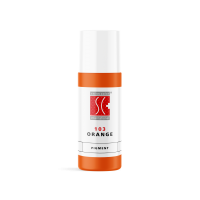 103 Orange - 5 ml Item No.: 103_5
103 Orange - 5 ml Item No.: 103_5 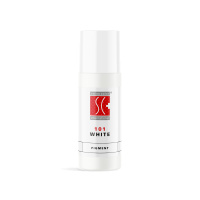 101 White - 5 ml Item No.: 101_5
101 White - 5 ml Item No.: 101_5 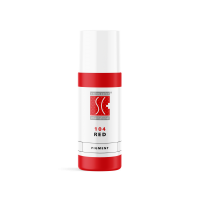 104 Red - 5 ml Item No.: 104_5
104 Red - 5 ml Item No.: 104_5 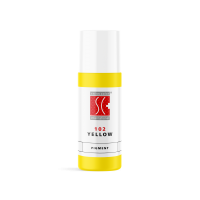 102 Yellow - 5 ml Item No.: 102_5
102 Yellow - 5 ml Item No.: 102_5 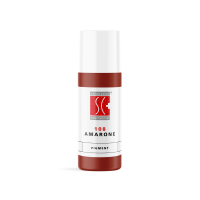 108 Amarone - 5 ml Item No.: 108
108 Amarone - 5 ml Item No.: 108 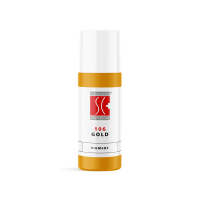 106 Gold - 5 ml Item No.: 106
106 Gold - 5 ml Item No.: 106 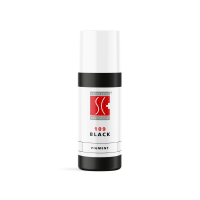 109 Black - 5 ml Item No.: 109
109 Black - 5 ml Item No.: 109 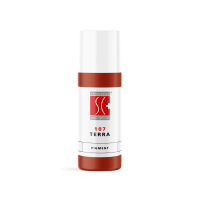 107 Terra - 5 ml Item No.: 107
107 Terra - 5 ml Item No.: 107 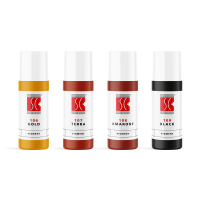 Inorganic Base Pigments Set Item No.: 100_I
Inorganic Base Pigments Set Item No.: 100_I 